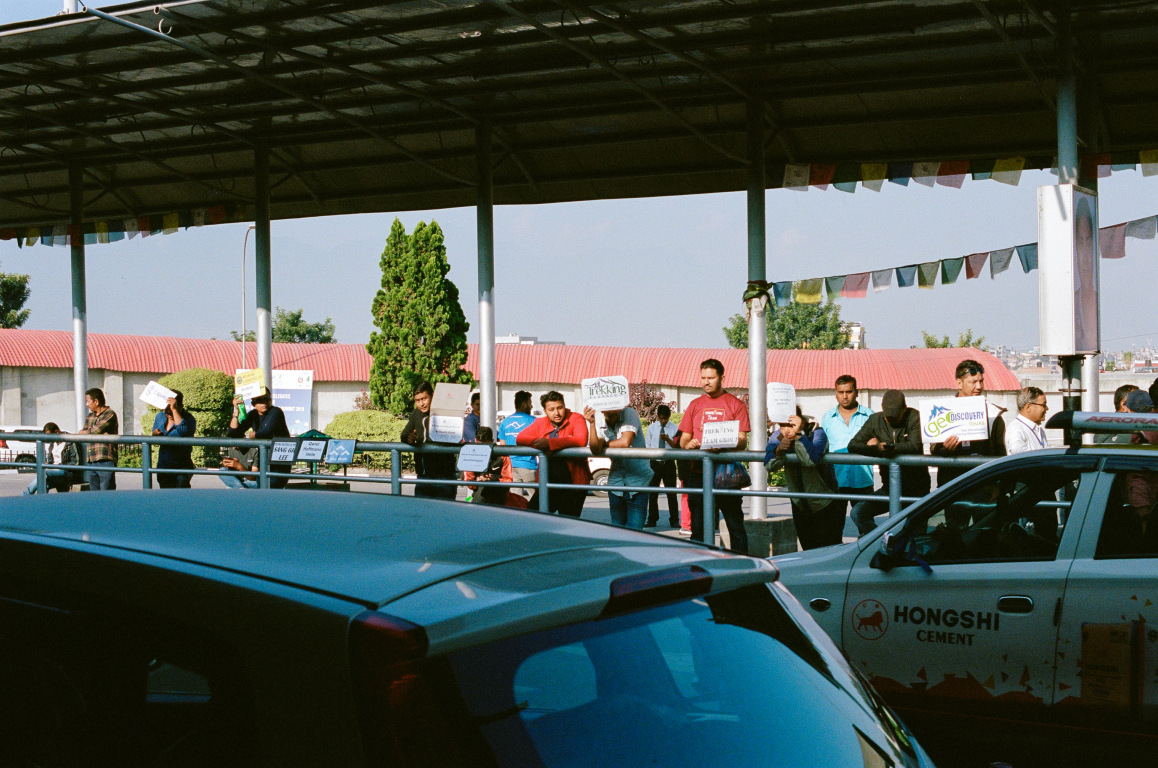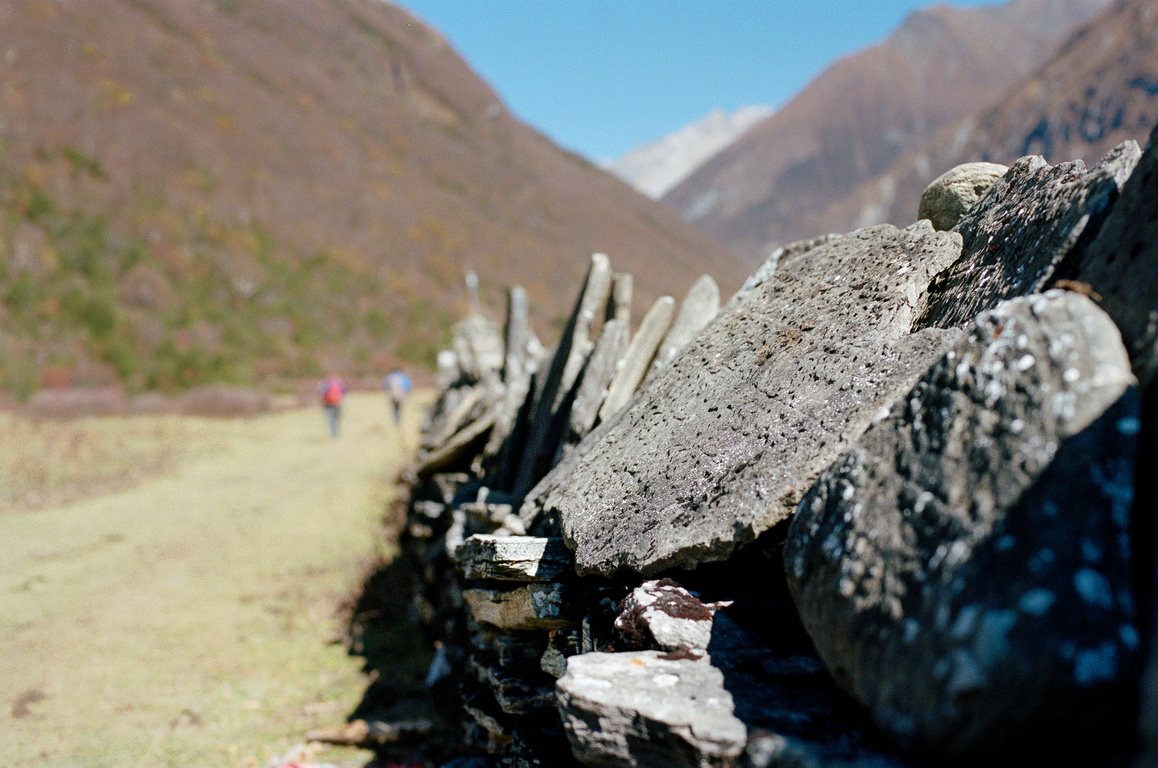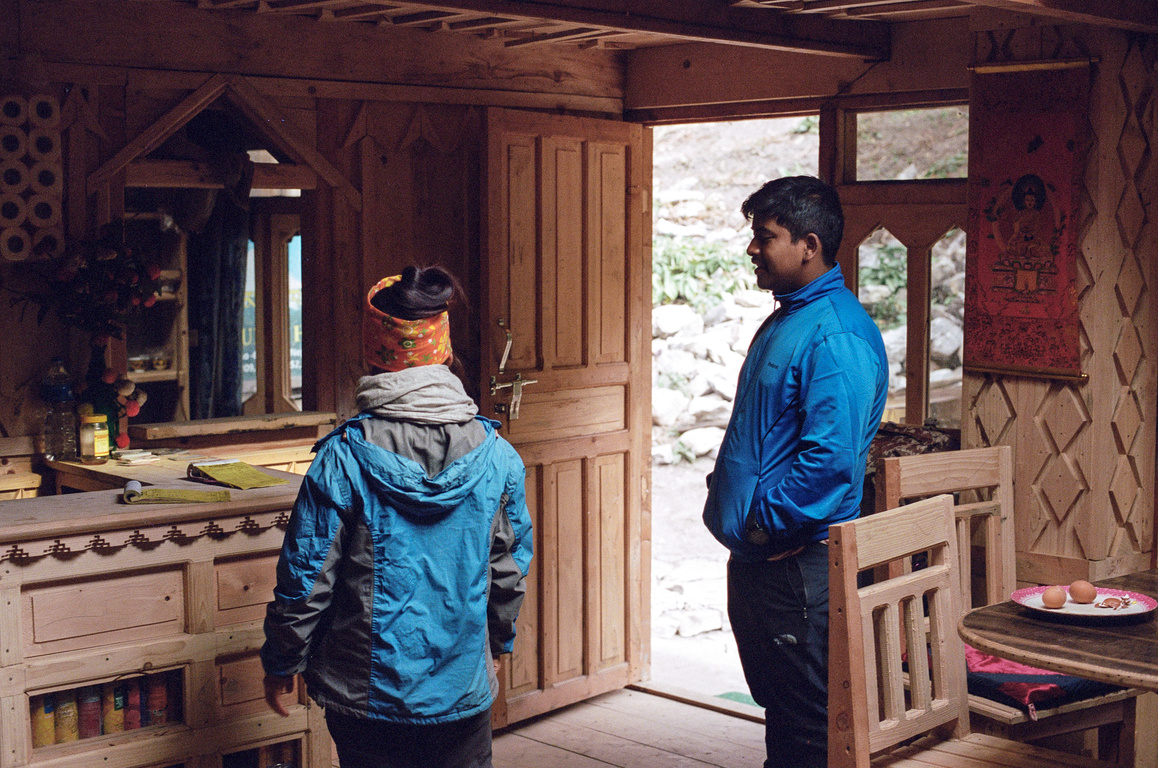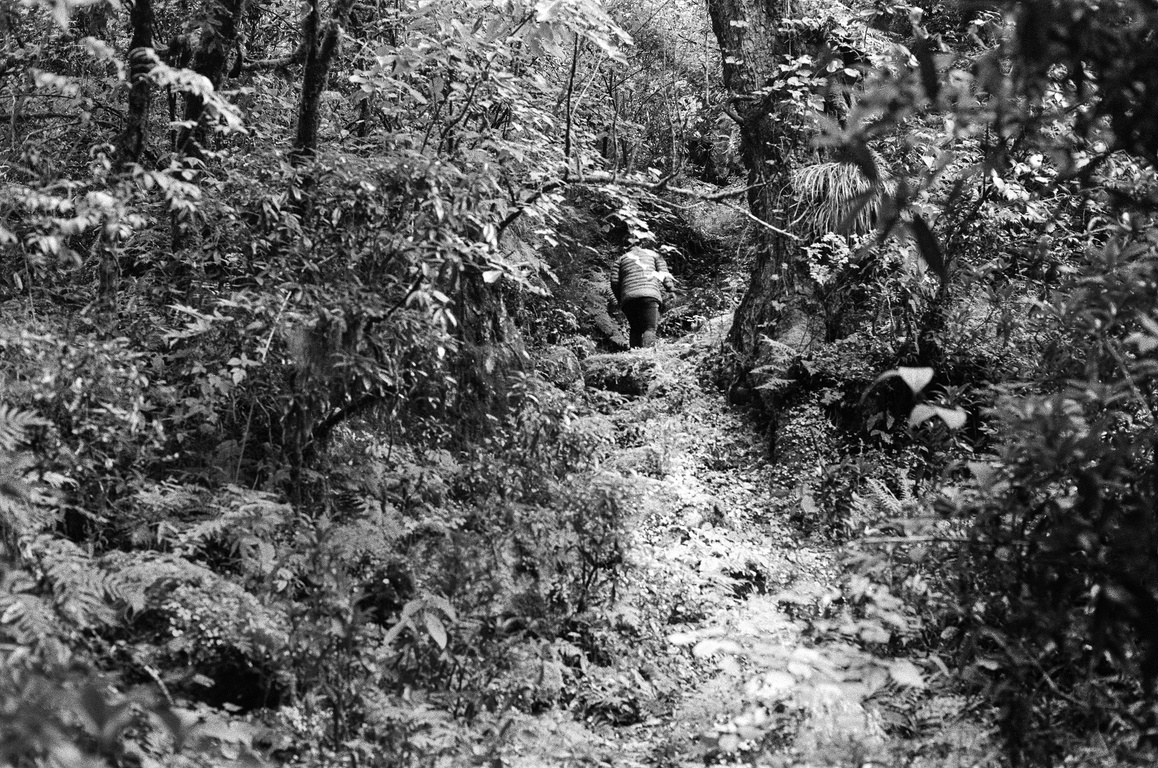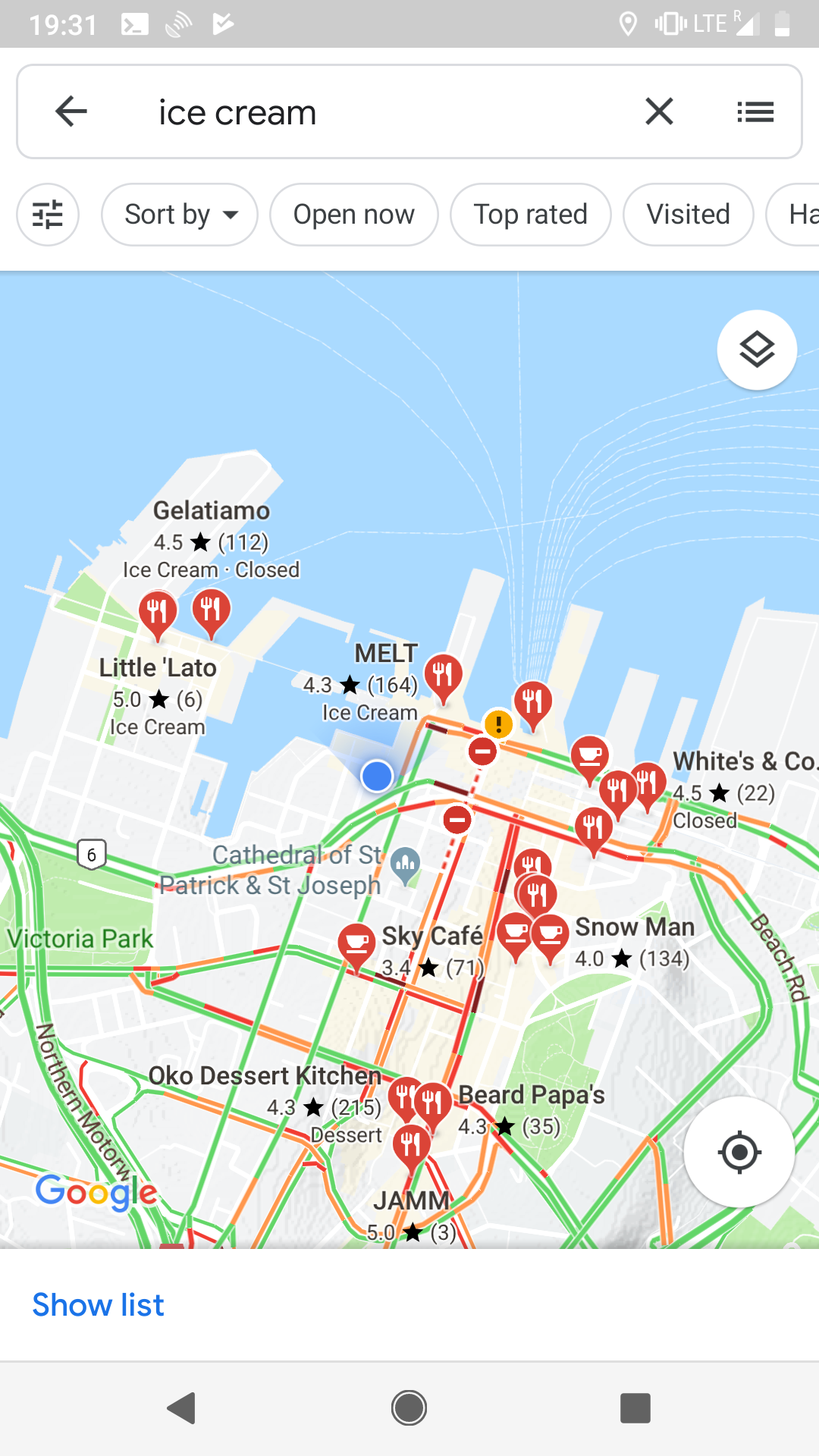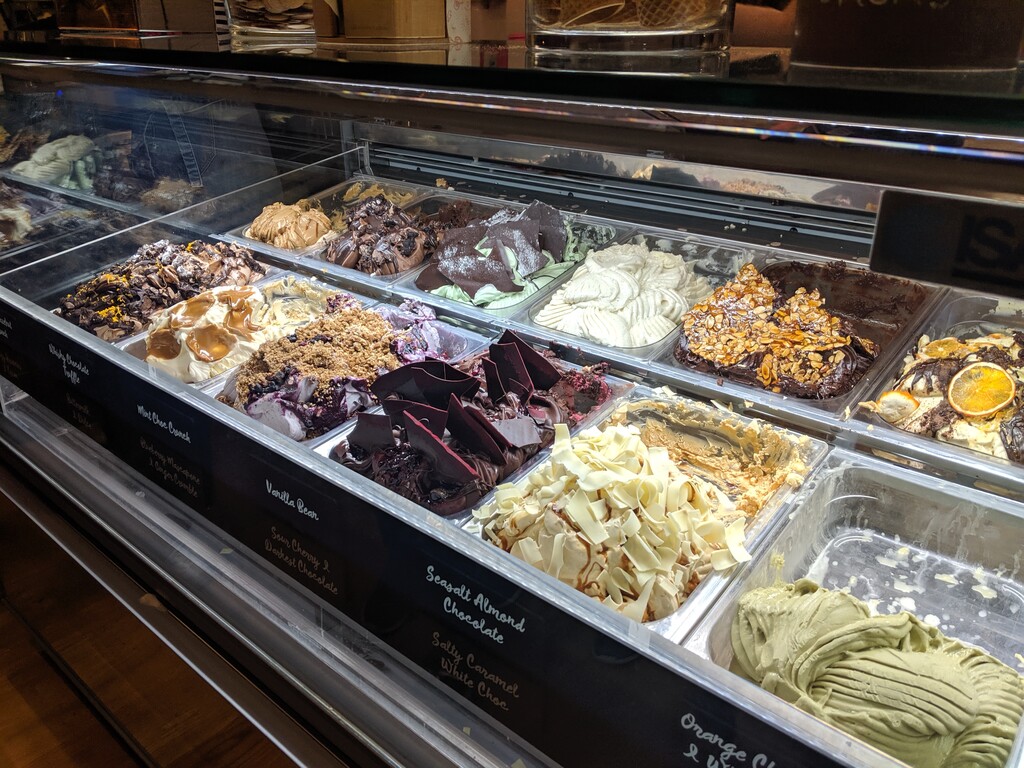In the lineage of yogis that I have from time to time studied with, we note the concepts of Shiva and Shakti as two energetic bodies: Shiva, the body of Being, and Shakti, the body of Becoming. Being is raw, undiluted consciousness and observation, peace and attentive calm; Becoming is the creative, wild, powerful, energetic force of change. We do not prioritize one over the other, and we find them both equally important, but also we know that neither of them are the end goal. Samadhi, or transcendence, is where "I" is no longer, where bodies and energy is no longer, where there is no difference between me and you, the inside and the outside, or even Being and Becoming. But for those of us still on this plane, Shiva and Shakti are separate, but inextricably linked.
Kamasi Washington takes a slightly different view on this, with his two-CD thesis, Heaven & Earth. He presents Earth as a gritty view of the present, of a place of real work, of abject reality; Heaven, on the other hand, he gives as something of a dreamland, an idealistic floating place, with the challenge that it is distinct from us. He, too, gives a view of the merger in his final note, Will You Sing, conjecturing the transcendence of the merger of the two. In the mean time, while they are still separate, he presents the alternatives as equally important concepts: Heaven must exist as an ideal, and Earth must exist to remind us of what we are.
With weighty subjects like that in mind, we come to an important topic.
* * *
During the week, I wrote that the Kiwis are just deadly serious about their ice cream. Well, I suspected that to be true, but I could not really know until what they call Thursday evening (but the rest of us Stateside call Wednesday night), when I reached what must be the terminus of my little self-guided ice cream tour of Auckland. Giapo -- 4.6*, according to Google, and even more unusually for an ice cream shop, "$$$" -- was just a five minute walk from Island Gelato Co, and I knew I was in for it when I went flipping through their FAQs, and found their central claim that "We are not for everyone—we are for the dreamers, innovators, artists, and all ice cream lovers. Giapo is for the people who are ready to see ice cream as a platform for freedom and art." Deadly serious, indeed.
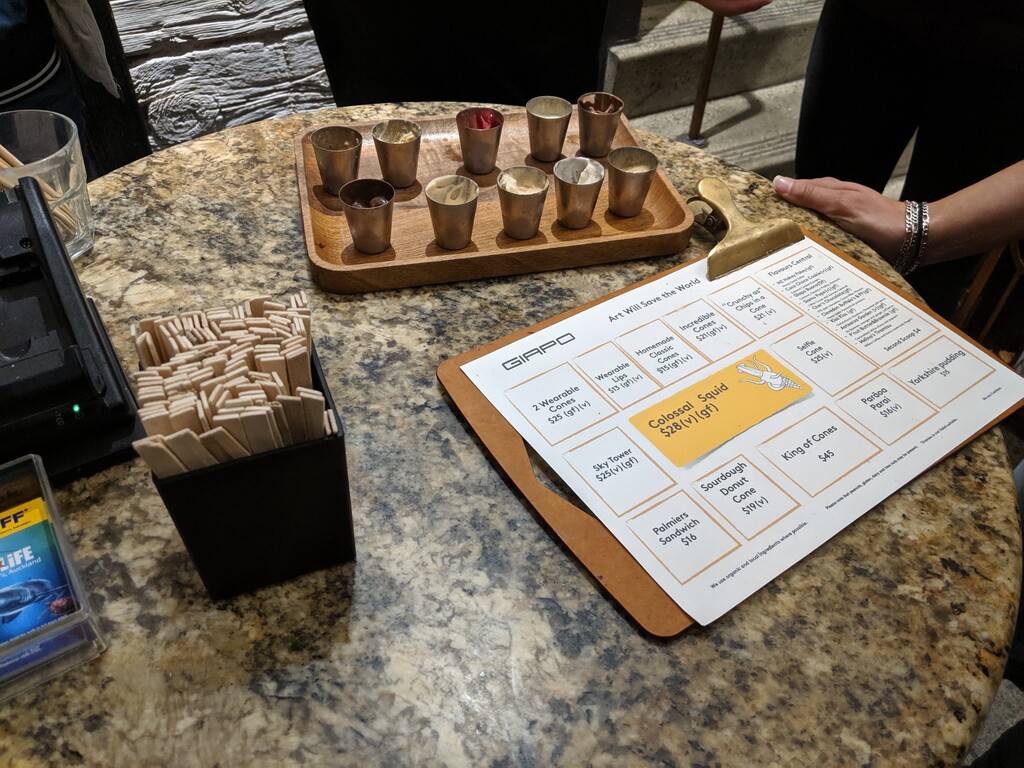
Giapo sells itself as an experience, then, rather than just simple ice cream. The whole process is heavily regimented, in fact: when I walked in, they rounded up all of the Giapo first-timers, and rather than simply taking our orders, went through an elaborate tasting process, where they brought out samples of all eight flavors, and had us try each of them in sequence. This was a quite foreign concept indeed to me: my usual procedure is to choose by looking and commit to my decision, safe in the knowledge that there is always room for more ice cream later. Giapo, on the other hand, does not even have their ice cream on display, and you do not get to see the visual form of your final creation until you have ordered it; each flavor is served differently, as I'd soon discover. I went through the tasting experience along with my five new friends in my tour group, and at long last, selected an ice cream -- NZ Hokey Pokey, in a pretzel Incredible Cone. The other flavors were certainly good, but I felt I needed to compare the basics, after all, and with the fact that Giapo doesn't serve in cups, it seemed like there would just be too much going on with a second flavor.
I should take a moment to note exactly what I mean by 'a pretzel Incredible Cone'. This particular ice cream shop seems to make everything to order; this particular Incredible Cone is a waffle cone (no sugar cones to be found here) dipped in chocolate, with pretzels around it (also dipped in chocolate). They also have a white chocolate, as well as a chocolate and gold, Incredible Cone; other ice cream substrates available include their "Selfie Cone" (a cone with some sort of an edible picture frame), the King of Cones (a cone about a meter tall), a Giant Squid Cone (a cone with a giant squid shaped thing on the top in which the ice cream resides; the form is said to be 3D printed), and their Two Wearable Cones (cones that are formed to fit on your fingertips, with the ice cream on top; you get two of them, for they are somewhat smaller). As I was considering these, my NZ Hokey Pokey Pretzel Incredible Cone arrived, still smoking from its unexpected chocolate shell having been hardened with liquid nitrogen.
A small plastic ice-cream-sample spoon was sticking out out of the side of the shell, as an invitation of where I should even start with this thing. And so I did: I started with a spoonful of ice cream, and a little bit of shell. Maybe I should get the basics out of the way to say that the ice cream was truly excellent. But I had not just ice cream, but a whole adventure of flavors in front of me: this cone had what seemed like a double-scoop on top of it already, and a truly massive chocolate shell with a line of Hokey Pokey (you'll recall that to be a honeycomb-toffee-like thing) down the side of it, and that was to say nothing of my chocolate-dipped cone.
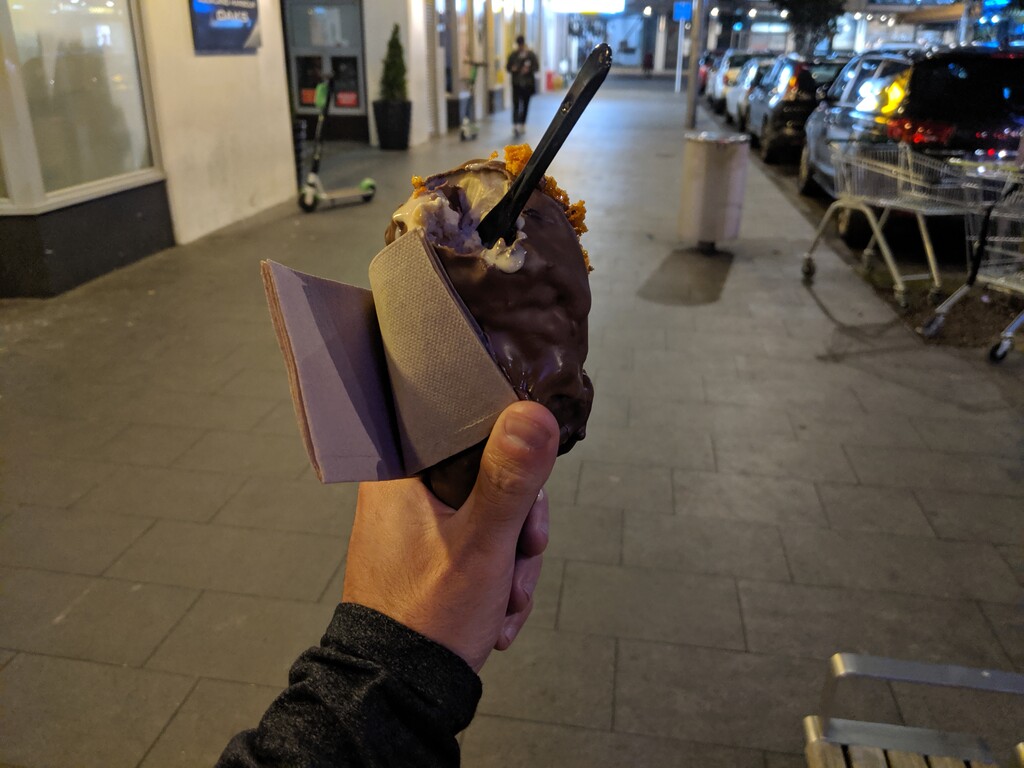
Where my beloved J. P. Licks, or even Rick's Ice Cream, is the down-home creamery of Earth, Giapo is the explosive constellations of Heaven. Giapo is not kidding when they say that they "do not comply with the traditional meaning of ice cream [...] that most people understand it to be"; Giapo's Incredible Cone asks more questions than it rightly can even begin to answer. How should I eat it? is only the start; is this even ice cream that's front and center? is another.
I took it with me as I walked back to my hotel, about a ten minute walk. I wasn't even finished with the cone by the time I got back, and it seemed daunting at that point. By the time I even got to the pretzels, my sense of taste was overloaded. It was unusually crisp and dry of an evening, given the patterns I'd seen so far that week; the rest of the week, it had rained on me every night as I went for my ice cream (it didn't stop me, and it didn't seem to stop any of the other Kiwis, either). The weather in Auckland seemed to change on a moment's notice, which the Kiwis in the office had been accustomed to by that point: at some point, I stood up from my workspace before lunch to see bright sun, wandered into the office's depths to take a leak, and by the time I emerged again, it was pouring buckets at a forty-five-degree angle outside my window, and a moment later, it was sunny again. But anyway, here I was with my overload of carbohydrates -- just me and a moment of clarity on the city.
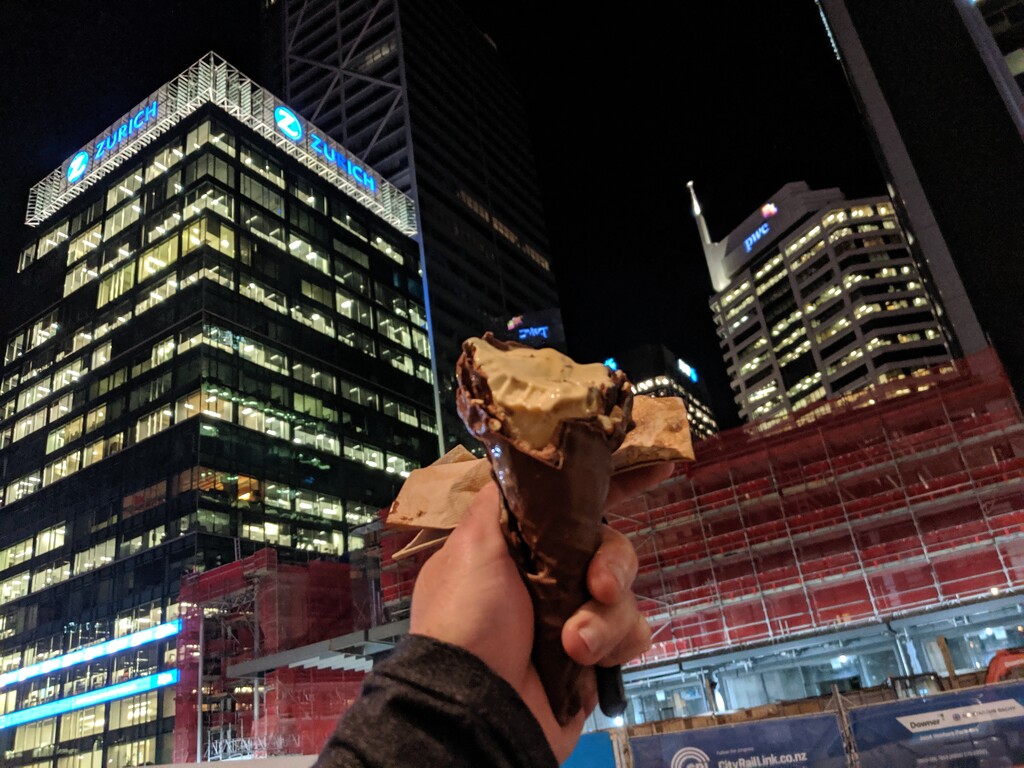
Giapo is the raw Shakti of ice cream: it is the raw expressive energy, the transformation, the Becoming. On its own, it is just too much. Rick's and Licks, on the other hand, are the Shiva of ice cream: the stillness, the steadiness, the Being. On their own, after all, they may not be enough.
By the time I made it back to my hotel room, I had a big chunk of waffle cone and chocolate in my hand, with just a taste of now liquid sweet cream in the middle. I considered chucking it, considered whether it was by now too much, considered if I had now already rightly had the Experience, after all. I ate it anyway, committing myself to pushing myself over the top in sugar consumption.
Heaven and Earth each remind us of a space in between, and of our own role in bringing one to the other. Shiva and Shakti, on their own, remind us of what they each bring to us, but they also remind us of the need for both together. Giapo and the simpler creameries are duals, too: Becoming to remind us of the simplicity of Being, and Being to remind us of the excitement of what's possible. Neither are transcendence on their own, but if we can learn to hold the feeling of both at once, maybe that is where we can break the cycles and patterns that bind us.
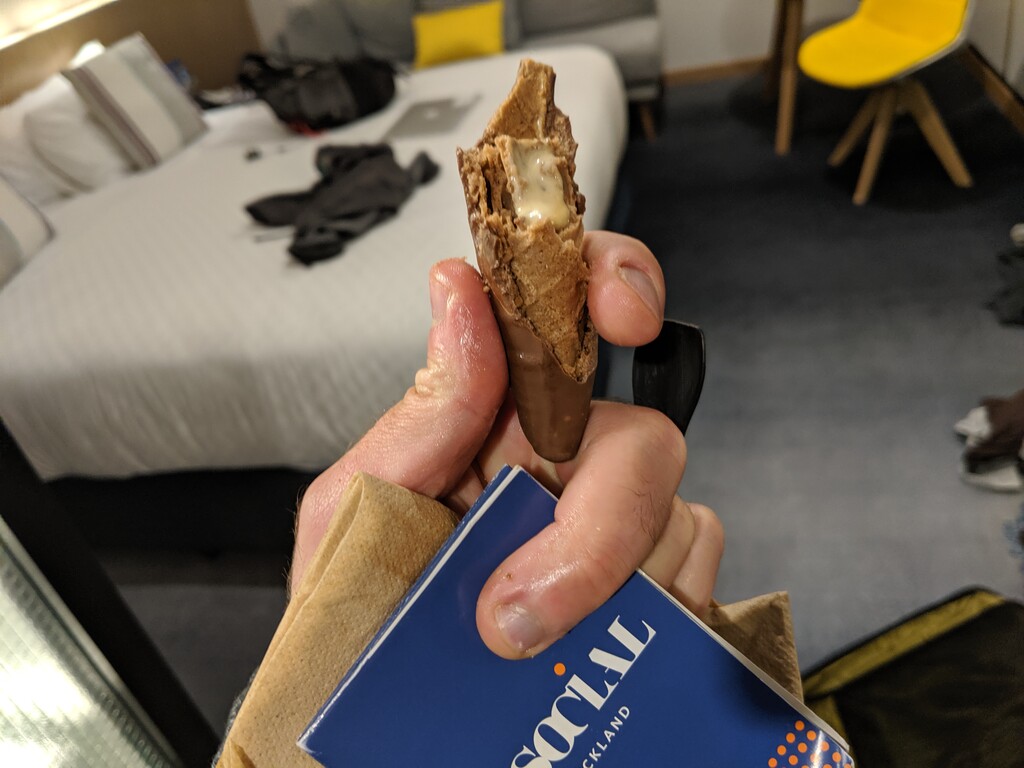
Heaven or Earth, Shiva or Shakti, Being or Becoming, it was over. All that was left was the echoes of the chocolate and ice cream and hokey pokey and pretzel and waffle cone in my bloodstream. I went to bed, and the next evening I got on an airplane and went home. On the plane, they served me one last New Zealand ice cream: "gingernut and triple chocolate".
It was alright, I guess.


